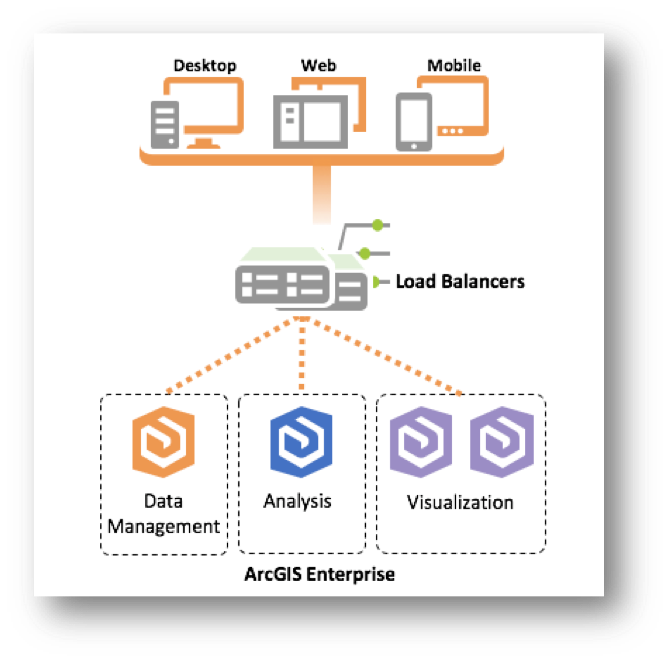- Home
- :
- All Communities
- :
- Services
- :
- Implementing ArcGIS
- :
- Implementing ArcGIS Blog
- :
- Designing a Robust Environment - Workload Separati...
Designing a Robust Environment - Workload Separation
- Subscribe to RSS Feed
- Mark as New
- Mark as Read
- Bookmark
- Subscribe
- Printer Friendly Page
Specific business functions impact the performance of the ArcGIS platform in different ways. By allocating workloads to appropriate server resources organized by business function, organizations can maximize performance, reduce risk, and meet business‐defined service level agreements (SLAs). By implementing geospatial function isolation, organizations can reduce the risk that high‐intensity processes will consume cycles needed to support critical applications, or that an abnormal spike in requests will disrupt service for all users.
Design Approach Value
Workload separation is a design approach that enhances performance and reliability by aligning the technical implementation with organizational business requirements. Consider different business workflows to understand how each workflow impacts compute resources, and then use segregated and preplanned resource allocation to meet the needs of each workflow.

Maximize Performance
System performance is maximized when service requests are directed to compute resources in a way that optimizes hardware and reduces resource contention. Direct service requests that are known to be central processor unit (CPU) intensive, such as complex analysis tasks, to an ArcGIS Server site containing machines with faster processors. Direct less intensive requests, such as map visualization tasks, to more modest machines. This approach makes the best use of available compute resources to achieve the highest performance.
Reduce Risk
Workload separation also reduces the risk of service interruption. System stability is enhanced because overloaded machines cannot affect other machines in the environment, which in turn protects critical tasks from resource contention. Route user requests to the appropriate sites through load balancers and deliver results securely and transparently.
Develop a Strategy!
Allocate hardware around core GIS capabilities, including data management, analysis, and visualization functions. Some organizations may have more detailed separation needs around specific business functions (such as imagery, real‐time data, or caching), hardware characteristics, or SLA definitions. Use GIS patterns, SLAs, and performance expectations to determine how to best direct workloads to appropriate compute resources.
Download the PDF for this presentation from the 2018 Esri User's Conference: Designing a Robust Environment - Workload Separation
Architecting the ArcGIS Platform: Best Practices
This blog post, serves as a high-level introduction to one topic that is featured in the Architecting the ArcGIS Platform: Best Practices whitepaper published by Esri. Other topics include High Availability, Load Balancing, Security, and more. Please click on the link above to learn more or post comments to ask questions and engage with Esri staff.
You must be a registered user to add a comment. If you've already registered, sign in. Otherwise, register and sign in.